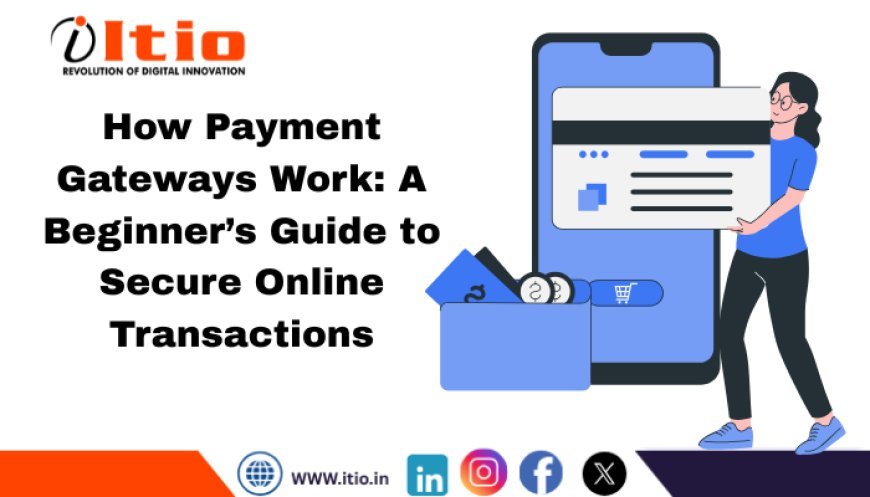How Payment Gateways Work: A Simple Guide for Online Businesses

In today’s digital world, being able to accept online payments quickly and safely is essential for any business. Whether you run an online store, offer subscriptions, or provide digital services, a good payment system helps keep your business running smoothly.
At the heart of this system is the payment gateway—the tool that helps move money from your customer to your bank account, while keeping everything secure.
In this guide, we’ll explain what a payment gateway is, how it works, and why it’s so important for your business.
What Is a Payment Gateway?
A payment gateway is a secure tool that sends payment information (like credit card details) from your website or app to the bank. It connects your business to the financial systems that process the payment.
In simple terms, the payment gateway:
-
Protects your customer’s private information
-
Checks if the payment can go through
-
Sends approval or decline messages
-
Helps transfer money to your bank account
Without a payment gateway, online transactions wouldn’t be possible—or safe.
How a Payment Gateway Works (Step by Step)
Let’s look at what happens behind the scenes when a customer makes an online payment:
1. Customer Makes a Payment
They choose a product or service, go to checkout, and enter their payment details.
2. Data Is Encrypted
The system protects (encrypts) the data so it can’t be seen by hackers.
3. Info Goes to the Payment Processor
The payment gateway sends the protected data to a payment processor, which checks with the customer’s bank.
4. Bank Checks the Payment
The bank looks at the account: Is there enough money? Is the card real? Is it safe?
5. Bank Sends a Decision
If everything looks good, the bank approves the payment. If not, it declines.
6. You Get the Response
The gateway sends the result (approved or declined) back to your website or app.
7. Money Is Sent to You
If approved, the money is sent to your bank account—this may take 1–3 days.
Why Security Is So Important
When handling money, safety is everything. A reliable payment gateway protects your customers and your business. Here’s how:
-
Encryption: All private data is scrambled so no one else can read it.
-
Tokenization: Real card numbers are replaced with secure “tokens.”
-
PCI DSS Compliance: Good gateways follow international rules to keep payments safe.
-
Fraud Protection: Smart systems watch for suspicious activity to stop fraud.
These tools help protect your brand and build customer trust.
Third-Party vs. Custom Payment Gateways
There are two main types of payment gateways you can use:
1. Third-Party Gateways
These are ready-made services like Stripe, PayPal, Razorpay, or Itio Innovex. They are:
-
Quick to set up
-
Safe and reliable
-
Great for businesses just getting started
But they may charge fees per transaction and may not offer full control over the payment experience.
2. Custom Payment Gateways
These are built just for your business—by your team or a development company. They offer:
-
Full control over design and features
-
Lower fees over time
-
Better integration with your internal systems
Custom gateways cost more upfront but give you more freedom and can grow with your business.
Types of Payment Gateways
Not all payment gateways work the same way. Here are the most common types:
Hosted Gateways
Customers are sent to another website to finish the payment (like PayPal). Easy to set up, but less control.
Self-Hosted Gateways
Customers enter their details on your site. You send the info to the gateway. More control, but you must handle security.
API-Based Gateways
These let you build your own checkout page while still using the gateway's features. Great for full customization.
Local Bank Gateways
These connect directly to local banks and are good if you focus on a specific country or region.
Each type has its pros and cons. Choose what works best for your business needs and customer experience. if you want to know more details about this than read this Blog Types of payment gateways : Everything you need to know
Choosing the Right Development Partner
If you're thinking about building a custom payment gateway, choosing the right development team is key. Look for:
-
Experience in building payment systems
-
Strong security features and compliance
-
Support for things like recurring billing or multi-currency
-
Help with setup and maintenance
The right partner will help you build a secure and scalable solution that fits your business.
Final Thoughts
Understanding how payment gateways work helps you choose the right setup for your business. Whether you use a third-party provider or build your own custom system, the goal is the same: make sure your customers can pay easily and safely.
Need a Secure Payment Gateway?
At Itio Innovex, we build secure, scalable, and customized payment gateway solutions for businesses of all sizes. Whether you're just starting out or growing fast, we’re here to help you offer better, safer online payments.
What's Your Reaction?

































































